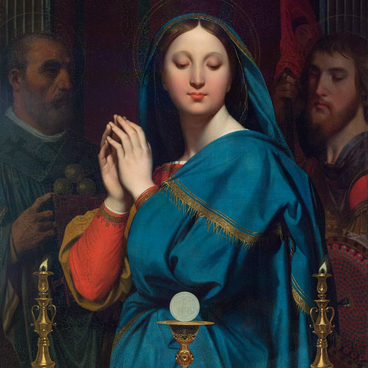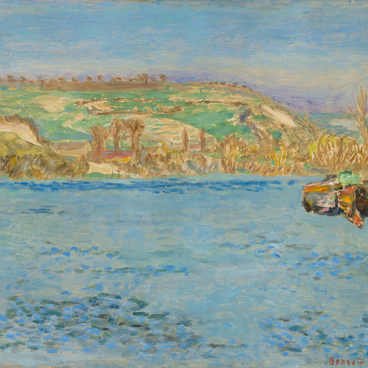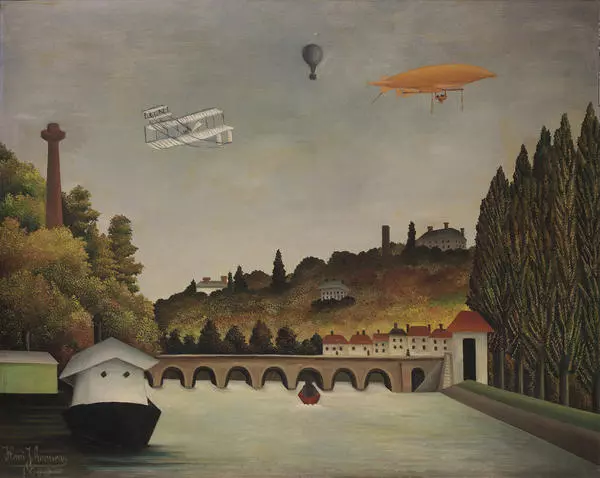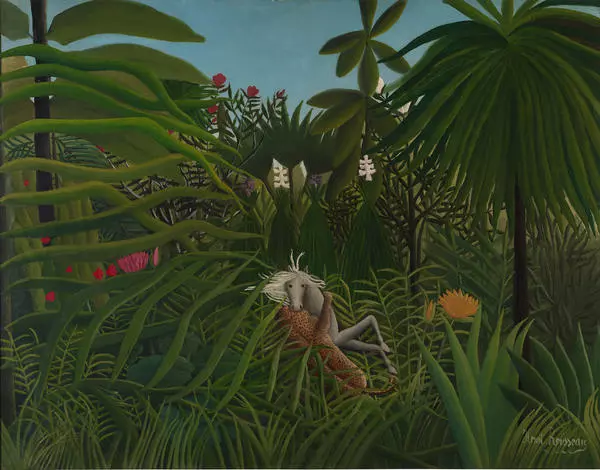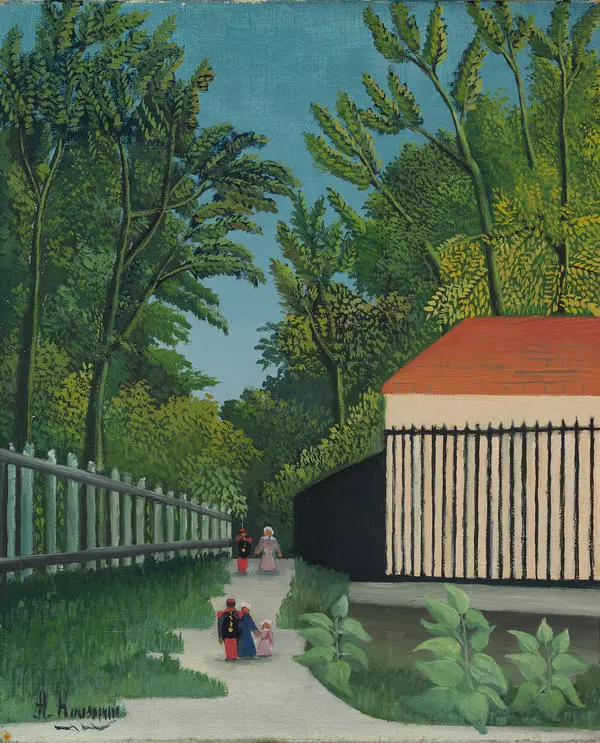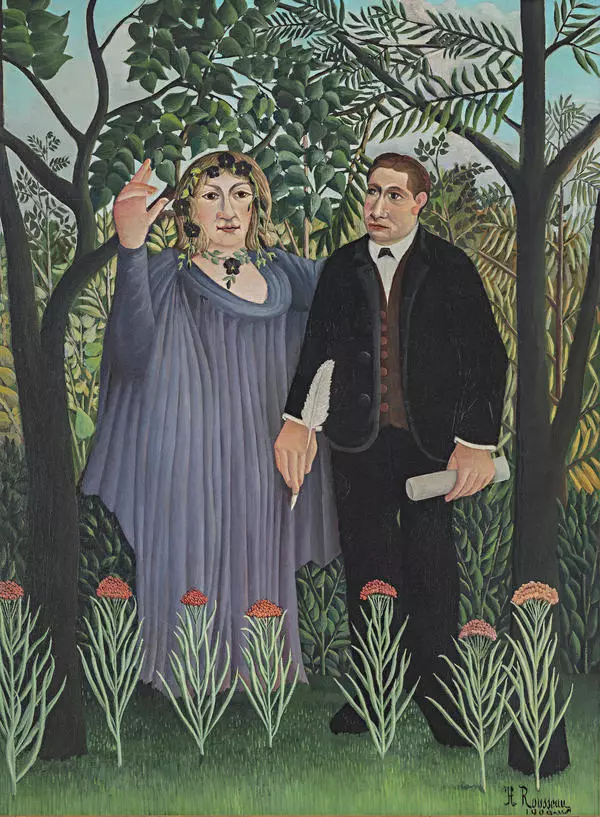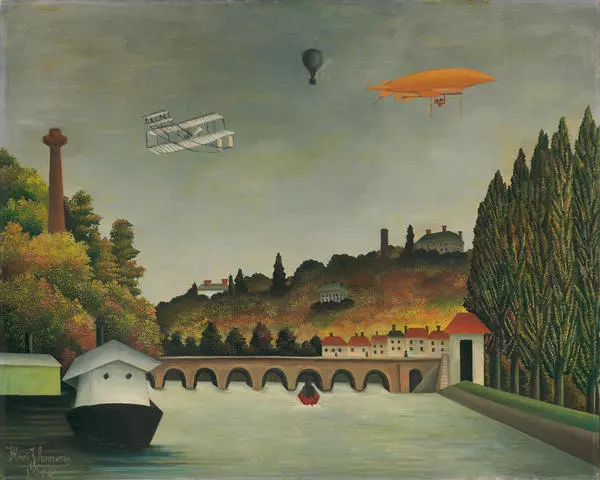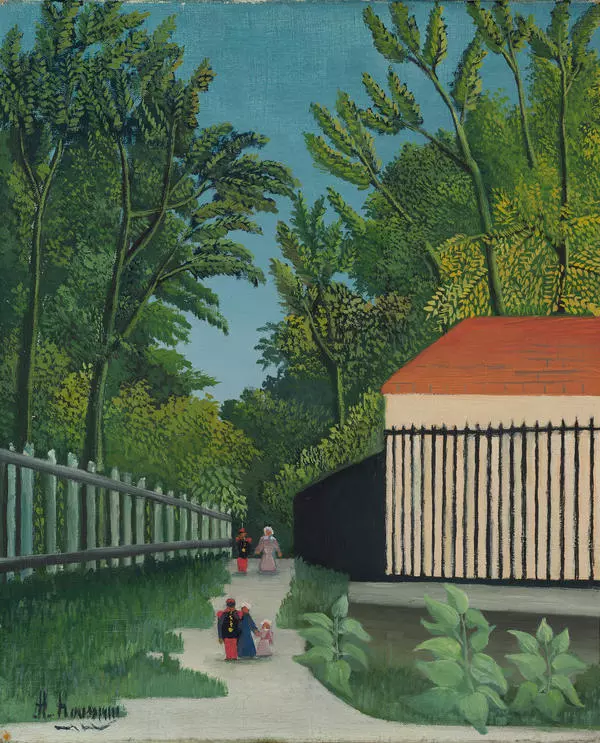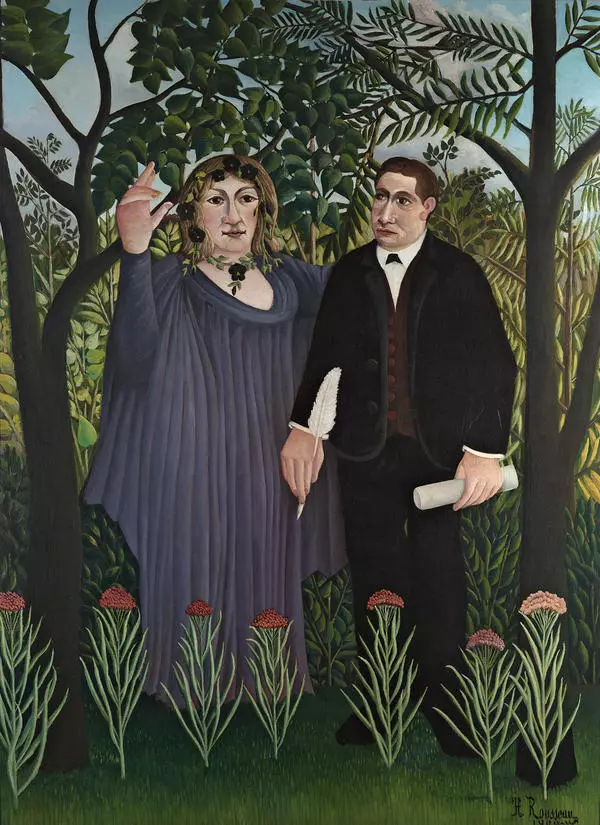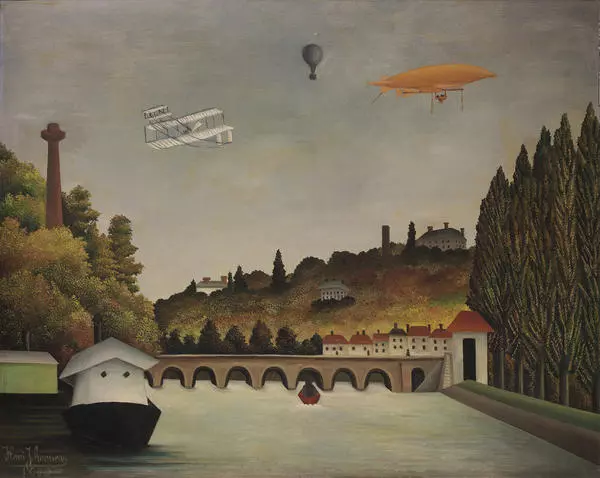The Muse Inspiring the Poet
Время создания
1909
Размер
130,6x97,2 cm
130,6 х 97,2 cm
130,6 х 97,2 cm
Техника
oil on canvas
11
Открыть в приложении#1
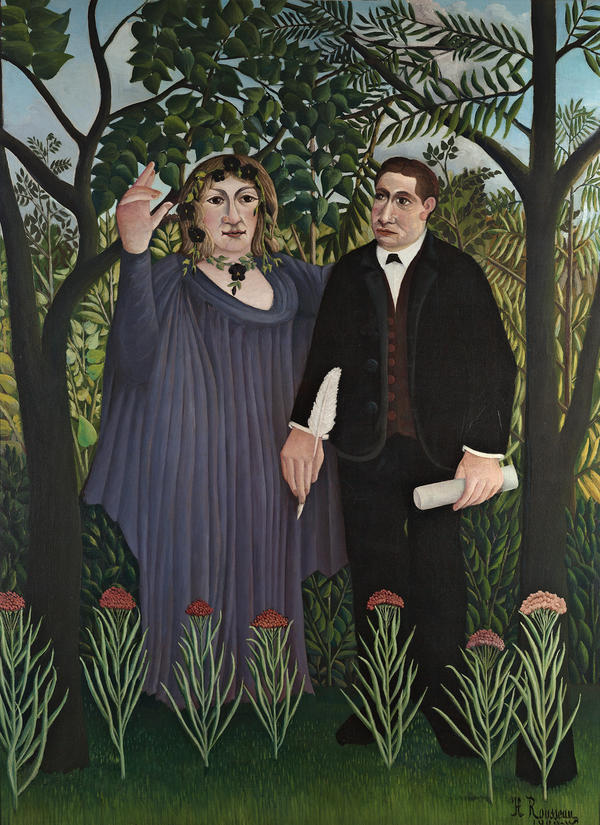
Henri Rousseau
The Muse Inspiring the Poet (The Poet and His Muse)
#15
#2
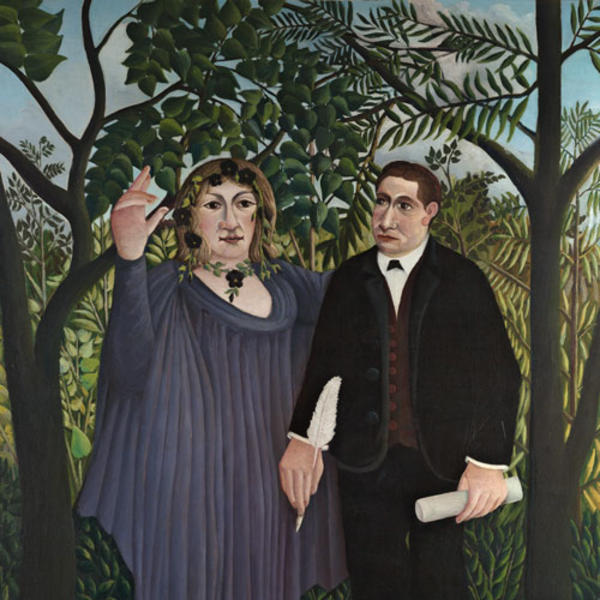
#7
According to eyewitnesses, Henri Rousseau wanted to paint his friend and admirer Guillaume Apollinaire (the poet) and his lover Marie Laurencin (the muse) in a specific spot of the Luxembourg Garden. While Rousseau was an innovator and an avant-garde artist to his contemporaries and junior colleagues, he considered himself to be an academic painter, or at least aspired to that. However, the boundary between the real and the imaginary worlds in his paintings is, as usual, faded: the remarkable trees and fruits of the Luxembourg Garden resemble the dreamlike, exotic landscapes of other paintings by Rousseau (‘The Hungry Lion Throws Itself on the Antelope’, ‘The Snake Charmer’, ‘The Dream’, ‘Eve And The Serpent’).
#16
Foliage
#3

#9
One of the features particular to naive painting is the outlined contours of objects and an almost complete absence of light, shadow, and color gradation. In ‘The Muse Inspiring the Poet’, this focus on contours can be seen not only in the central characters, but also in the landscape. As a primitivist, Rousseau atomized the greenery: every leaf is separated from the others and has its own contour.
#17
Flowers in the foreground
#4

#10
Rousseau said that he invented a new genre — the landscape portrait. Landscapes in his portraits are more than a generalized background. They were created with the same thoroughness both in the process (the artist always started with drawing contours, then worked on the landscapes, and finally painted the portrait part) and in the symbolic meaning. Using landscape elements, Rousseau wanted to reveal the personalities of his characters. For example, the matthiolas in the foreground of ‘The Muse Inspiring the Poet’ symbolize the inner passion of a poetic soul. This was actually an incorrect interpretation: matthiolas are considered a symbol of death, and when the painter learned that, he had to create a second version of the artwork, using the more appropriate carnations. In fact, he had to wait a long time for them to bloom in order to paint the flowers from nature.
#18
Faces and figures
#24
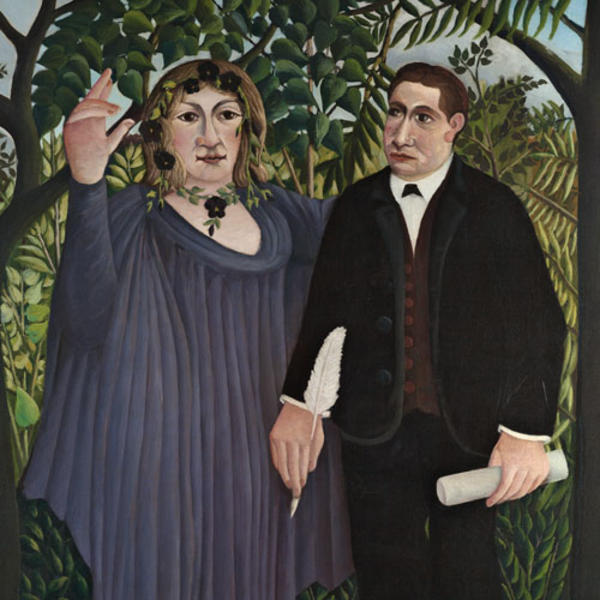
#19
Rousseau had a very specific understanding of realism and called himself a supporter of realistic traditions. According to Apollinaire’s memories,
#21
“first of all, he measured my nose, mouth, ears, forehead, hands, my entire body, and then he transferred all these dimensions onto his canvas, scaling it out according to the size of the frame. <…> I did not move and observed with admiration how gently he treated the work of his imagination, not allowing anything or anyone to interrupt the process and destroy the harmony of the drawing”.
#22
Later, he did the same with Marie Laurencin. Their reactions were completely different: Marie Laurencin burst into laughter when she saw the painting, while Apollinaire was very offended. When he asked Rousseau why he had painted his lover in this way, the artist said:
#23
“A big poet needs a big muse!”
читать дальшескрыть
00:00
00:00
1x
The Muse Inspiring the Poet
Время создания
1909
Размер
130,6x97,2 cm
130,6 х 97,2 cm
130,6 х 97,2 cm
Техника
oil on canvas
11
Открыть в приложении
Поделиться

